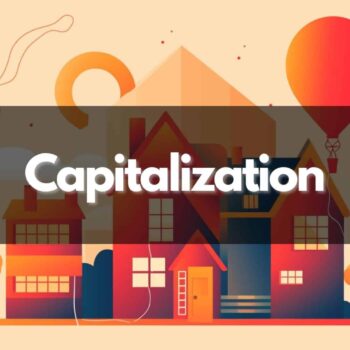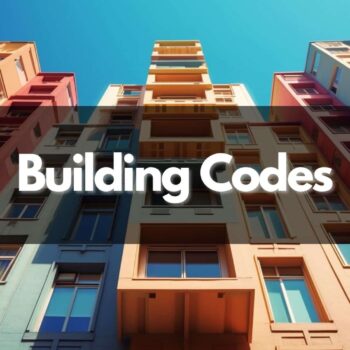The U.S Department of Agriculture (USDA) provides loans to people who aren’t wealthy and can’t fulfill their dreams of having their own homes. Most of these people live in rural areas and aren’t eligible for conventional loans. USDA loans offer zero down payments and low-interest rates. In this post, we’ll define USDA Loans, talk about how they work and help prepare you for the real estate exam.
What Is a USDA Loan?
A USDA loan is a mortgage offered by the USDA as part of the Rural Development Guaranteed Housing Loan Program. This program is designed to improve the economy and improve the quality of life in rural areas of America. The loans are available for all home buyers with low or moderate income. With these loans, borrowers can buy new homes or refinance homes they already own.
The main feature of USDA loans is that they offer below-market mortgage rates, reduced mortgage insurance, and no down payment. However, these loans restrict the buyers to take homes only in rural areas, and the property types are also restricted. To sum it up, USDA loans offer 100% financing of homes for qualified applicants who can’t buy homes themselves.
USDA Loan Requirements
USDA Loan requirements are based on the type of property and the buyer. This loan program is only for houses in rural areas. According to USDA, a rural area has a population of not more than 35,000. Besides that, the borrower must meet the requirements for monthly income caps set by the USDA. The following are the main requirements for USDA loans:
- Low or moderate income and the borrower should have a stable monthly income proven by tax returns for a minimum of 24 months
- A FICO credit score of at least 640 (the credit requirement varies from lender to lender)
- A debt-to-income ratio of 41% or less
The borrower must have an acceptable credit history with no bankruptcy and no accounts converted to collections during the last year to be eligible. Applicants with a credit score of 640 or higher get more favorable terms.
Types of USDA Loans
There are two types of USDA loans; both offer no down payment and help with housing in rural areas. However, there are some differences between these loans, which I’ll explain below:
Guaranteed USDA Loan
Guaranteed USDA loans allow borrowers to obtain loans from commercial lenders or banks. The loan or mortgage is guaranteed by USDA and is up to 90% of the home value. The guaranteed loan can be used for buying a new home, repairing an existing one, reconstructing, renovating, or even relocating to another society.
To qualify for a Guaranteed USDA loan, the borrower must meet the income requirements. These loans require the borrower to earn less than 115% of the median income in their area. Property requirements are a bit flexible with these loans; for instance, the borrower can buy a home in rural areas, but a few suburban areas also qualify. USDA loans also require borrowers to pay a guarantee fee of 1% of the loan amount. Besides that, there’s an annual fee of 0.35% of the loan amount. Following are the main requirements and features of guaranteed USDA loans summed up:
- Down payment: 0%
- Debt-to-income ratio: 41% or less
- Credit Score: No minimum, but 640 or more for flexible terms
- Property Location: rural areas
- Property size: modest for the rural area
- Property type: primary residence, shouldn’t have an in-ground swimming pool, should be non-income producing
Direct USDA Loan
Direct USDA loans are directly offered by USDA and not any private lender. These loans are designed for very low and low-income borrowers. They are available for applicants who can’t afford a mortgage and live in unsafe, unhealthy houses with no proper sanitation. These loans have a long term, mostly 33 years, but they can go as long as 38 years. The income requirements vary by region, and the interest rates can be as low as 1% with subsidies. The following are the main requirements and features of direct USDA loans:
- Down payment: 0%
- Debt-to-income ratio: 41% or less
- Credit score: At least 640, but the borrower can still qualify if it’s a lower
- Income limit: low and very-low income
- Property Location: rural area
- Property size: less than or equal to 2,000 square feet
- Property type: primary residence, shouldn’t have an in-ground swimming pool, should be non-income producing
USDA Loans Vs. Conventional Loans
The no down payment option of a USDA loan is attractive, but with this loan, the borrower has to live in an area defined by USDA as a rural area. Conventional loans aren’t backed by the government, unlike USDA loans, which require a down payment too. The following is a breakdown of the differences between USDA and conventional loans:
- USDA loans require a 0% down payment, while conventional loans have a 3% or more down payment depending on the lender.
- The minimum credit score required for USDA loans is 640, while for conventional loans, it is 620.
- USDA loans allow the borrower to buy homes only in rural areas designated by USDA. On the other hand, there are no restrictions on purchasing a property through conventional loans.
- USDA loans require a 1% upfront guarantee fee, while there are no guarantee or annual fee payments with conventional loans
- Conventional loans have higher interest rates than USDA loans.
USDA Loans Vs. FHA Loans
USDA and FHA loans are backed by the government, but they are guaranteed by different organizations. Plus, both loans have different requirements for qualification. The following are the main differences between both government-backed loans:
- USDA loans require no down payment, and FHA loans require a 3.5% down payment or more.
- USDA loans require that the home is in rural areas, while FHA loans have no restriction over the house’s location.
- USDA loans have a minimum credit score of 640 or more, while FHA loans offer lenient credit score requirements. With FHA loans, borrowers with a 580 credit score can pay a 3.5% down payment, and borrowers with scores between 500 to 570 can pay a 10% down payment.
- USDA loans have income limits, but FHA loans have no income limits.
- USDA loans require a 1% guarantee fee, and FHA loans require a 1.75% upfront premium.
USDA Loan Examples
Example 1: Person A is a young woman living in a rural area who wants to buy a new home. She has nothing for a down payment but earns $3500 per month. A loan officer helped her get a Guaranteed USDA loan to purchase a house worth $175,000 and around 1500 square feet. The house has three bedrooms and two bathrooms, enough for her small family. The loan officer calculated all the details, which are as follows:
- House price: $175,000
- Down payment: 0%
- Term: 30 years
- Loan APR: 3.75%
- MPI: 0.35%
- Principal and interest: $818.56
- All-in monthly payment: $1,117.93
Example 2: Person B purchased a house through a direct USDA loan, and he’s currently living in it. Since the borrower had a credit score of 600 at that time, he couldn’t get favorable rates and terms for the loans. Now that he has improved his credit score by making payments on time, he wishes to lower his interest rate. After discussing his case with a loan officer, he learned he could refinance his current mortgage through a USDA loan. The following are the requirements for using USDA refinance loans:
- The mortgage to be refinanced should be a guaranteed or direct USDA loan
- The mortgage must be older than 12 months before the refinance request
- New appraisal fee for direct USDA loans
Person B was earlier paying $1,337 per month for a home price of $150,000 at an interest rate of 6% and a term of 30 years. After refinancing the loan, he’s paying $1,152 per month at an interest rate of 4%.
USDA Loan Frequently Asked Questions
Who Should Get a USDA Loan?
USDA loans are designed to help people buy homes in rural areas. To get these loans, areas in urban or metropolitan areas are completely excluded. Thus, the borrower can only purchase homes in rural areas. If the borrower is willing to purchase a home in the city, he won’t be able to qualify for the USDA loans. Besides that, the borrower’s income also determines whether he is eligible for the loan. USDA loans are mostly the only option for borrowers as they can’t qualify for conventional, FHA, or VA loans.
How to Get a USDA Loan?
Guaranteed USDA loans are available through USDA-approved lenders such as Caliber Home Loans, Carrington, Flagstar Bank, and Movement Mortgage. These lenders offer mortgages backed by USDA. Direct USDA loans are available through USDA rural development, and the financing is available through the government. To get direct USDA loans, the borrower must apply directly to USDA.
What are the Rates and Terms for a USDA Loan?
Government-backed loans offer lower rates and terms as compared to conventional loans. Interest rates for these loans are fixed and can go as low as 1% for direct loans. The repayment term for direct loans can be up to 33 years and 38 years for very low-income applicants. Guaranteed USDA loans have fixed rates and a 30-year term for repayment of the loan.
What are the Disadvantages of USDA Loans?
USDA loans come with a few disadvantages. For instance, there is a restriction on the location of the home the borrower will buy; that is, the house should be in a rural or suburban area only. Plus, there are restrictions on the property type too. USDA loans allow the borrower to purchase a single-family residence with a modest size (around 2000 square feet) and no in-ground swimming pool. To get USDA loans, the borrower must live in the house he will purchase with these loans. Lastly, there are limits for USDA loans according to the borrower’s income. Most USDA loans allow borrowers to purchase a house of up to $285,000 or less.
What to Know for the Real Estate Exams?
USDA loans are fixed-rate loans for low and moderate-income applicants to purchase rural and suburban homes. These loans are guaranteed by the department of agriculture and are of two types; guaranteed and direct. Guaranteed USDA loans are available through private lenders, but direct USDA loans are available directly from the Department of Agriculture. This post thoroughly examined the requirements, types, and main features of USDA loans. If you’re preparing for a real estate exam, learning about USDA loans is a must. To learn about more real estate terms, visit the real estate flashcard app.











